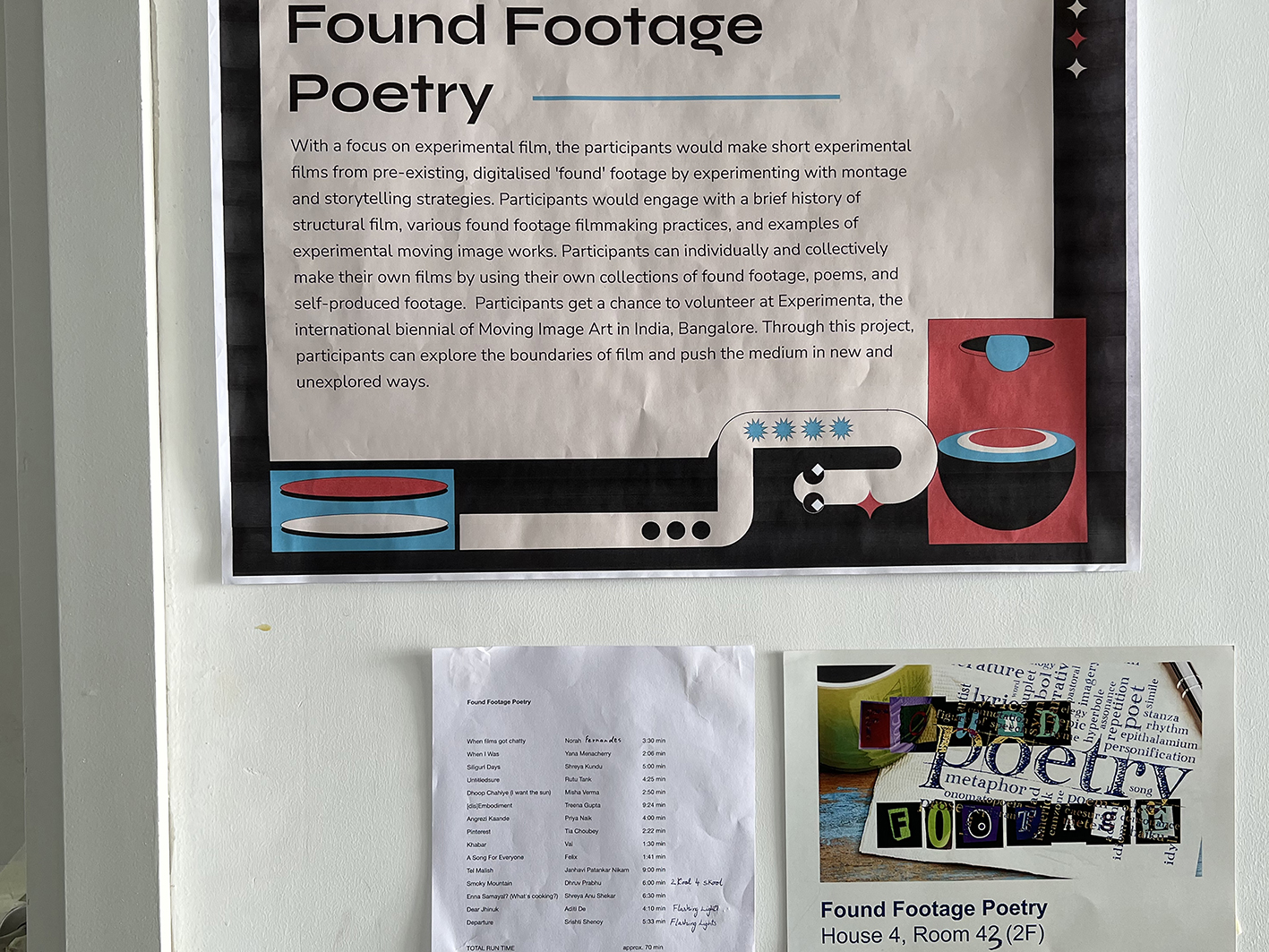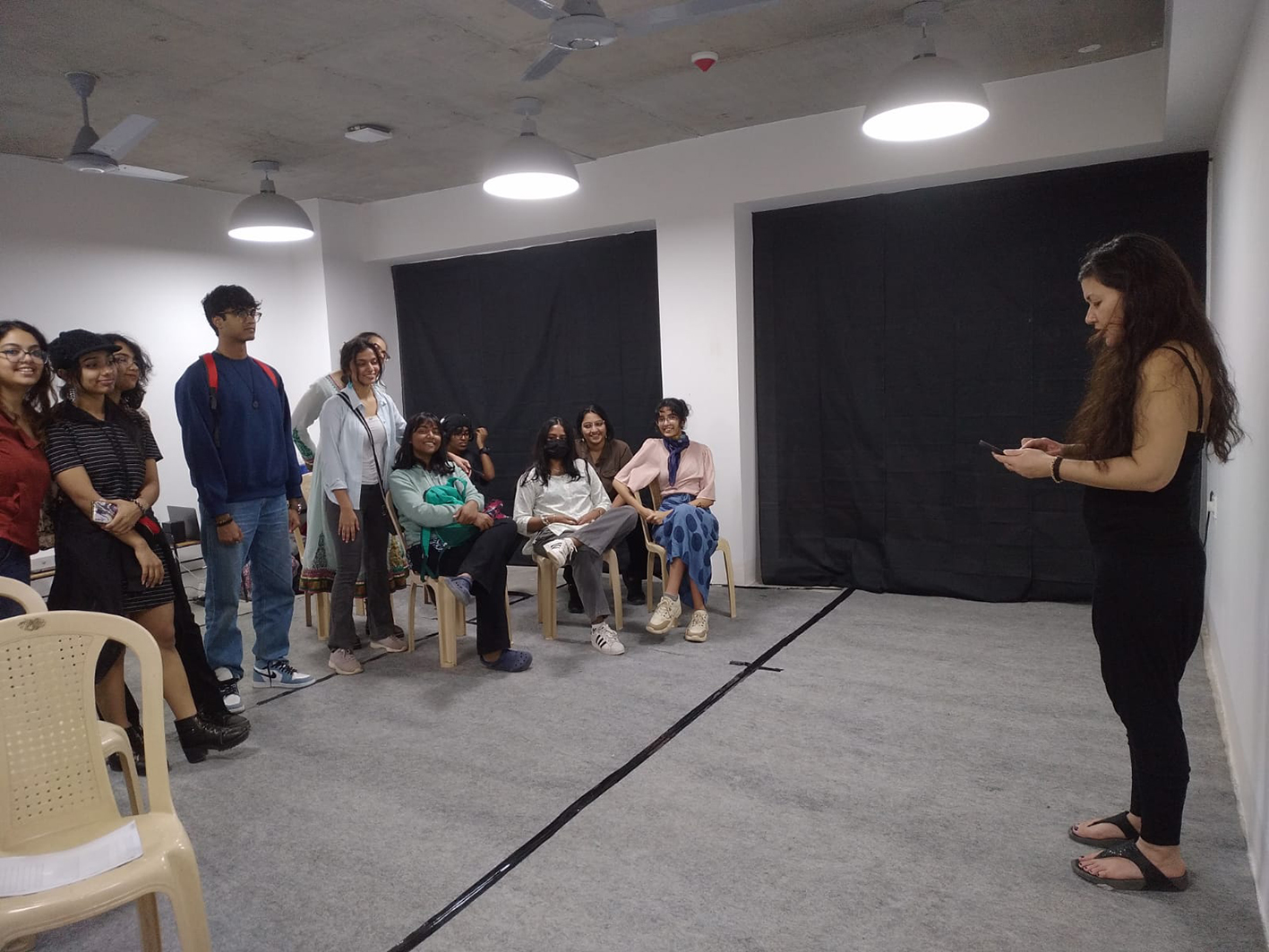Found Footage Poetry

Teaching the Interim Class at Srishti has been one of the most humbling and rewarding experience I have had, with highly receptive, curious, generous and very talented young students. There was laughter, some tears, some fears—every single student pushed their own limits and transcended boundaries to create something entirely idiosyncratic, finding their very own cinematic language and personal expression. It is so rare and precious to open up a highly conducive exchange and conversation, and I am very curious to see what the students will be up to in the future!
With thanks to the Goethe Institute Bangalore for bringing me to India; Ayisha Abraham, Payal Kapadia and Sohrab Hura who generously made time to speak with/in our class; and special thanks Priya Sen who acted as assisting professor at Srishti and was with us throughout the journey.
Here is a short Interview taken from the Srishti Interim documentation publication:
What was your agenda while using found footage and archival material in films?
I have been working with pre-existing archival and “found” footage for 19 years now, and one thing I can say clearly is that there is no agenda other than the ongoing and deep passion for old (celluloid) film that has been discarded, abandoned, neglected and is begging to be re-contextualized in artistic, poetic and metaphorical ways. Most of my early work incorporates mid-century footage taken from educational, industrial and amateur films, but in recent work I have used more contemporary images, including footage I shot myself, as well as stock footage. To me, the possibilities of working with “found” footage continues to appear endless.
How did you approach the process of selecting and manipulating material for this project?
In my Srishti Interim Course, all students are working on their own film project. After being introduced to the term, it’s history, and after being exposed to a large quantity of Found Footage practices, the students developed ideas for their own film. Almost all students are working on rather personal films, but the material is taken from different places: some are using family photos taken by their parents, others are using snapshots that were taken by friends and one student is looking at early Indian cinema.
How significant is the role of poetry in experimental films and how will it be incorporated into the project?
I use the term poetry an expansive and open fashion: how does the combination of certain images and sounds evoke poetic assemblages? How does the art of montage open up unexpected associations, spaces for new meaning? Many students are finding their poetic expression in experimenting with the montage of image and sound. Others have written essays to use as a voice-over, and a couple of students are using poems that they have written in their projects. The students were given absolute freedom, they could even use footage they shot themsleves. The only requirement was that it incorporated found footage.
What are the main challenges while guiding participants in understanding the balance between utilising found footage and incorporating personal and psychological elements in their films?
The balancing act is in itself something that cannot be taught. We have had discussions about how much the students want to reveal themselves, and how vulnerable they might allow themself to get. These choices were made by the students themselves.
What are the political and social implications of using found footage in their films?
In a world overdriven by surplus value, recycling – or upcycling – pre-existing footage that may otherwise be discarded becomes a political act in itself. Of course, there are questions that accompany working with found footage: Who were the images made for? What happens to an image, once released into the public realm? What happens to an image, once it looses its value? Who cares for and about images that are thrown away? What happens to an image that loses its owner? Who is represented, and how? Whose image can we use? Whose history and whose memory is told? How do we open up a personal story to connect to a larger social context?
With thanks to the students Aditi, Dhruv, Felix, Janhavi, Norah, Priya, Rutu, Shreya K., Shreya S., Srishti, Tia, Treena, Yana and Vai.
Here are the works the students made, listed in the reverse order of the final presentation / exhibition at Srishti.
Departure by Srishti Shenoy, 5:39 minutes. A personal letter enclosed in a flicker film, using covers of passports collected from the internet.
Dear Jhinuk by Aditi De, 3:35 minutes. A lyrical personal quest for the inner child.
Enna Samayal? (What's cooking?) by Shreya Anu Shekar, 5:33 minutes. A personal homage to the women in the filmmakers family, addressing questions of labor, education and gender.
Smoky Mountain by Dhruv Prabhu, 6:00 minutes. A short consisting of video messages that the filmmakers family sent while the father was abroad for work. On family love, distance, closeness.
Tel Malish by Janhavi Patankar Nikam, 7:38 minutes. Self-portraiture, gender representation and subjectivity in the age of internet. In the filmmakers own words: "In this video essay, a young woman gathers scarred pieces of herself and pours her heart into an abyss."
A Song for Everyone by Felix, 1:41 minutes. An animated short referencing memes during the Covid pandemic. On gender, subjectivity, empowerment.
Khabar by Vai, 1:24 minutes. Made up entirely of Indian news snippets, this one minute piece is a commentary on gender based violence and the (lack) of conversation, care, and consideration for the victims of these devastating and harmful acts.
Pinterest by Tia Choubey, 2:21 minutes. A personal rumination from the perspective of the first 'social media generation’– embedding questions of isolation, belonging, choice, and feeling at home online.
Angrezi Kaande by Priya Naik, 3:58 minutes. A playful video-poem on coming of age, and the filmmaker’s relationship to her brother.
[dis]embodiment by Treena Gupta, 9:23 minutes. Video footage of the filmmaker’s experience as a student of Bharatanatyam dance pose the point of departure in a experimental essay on an unarticulated personal trauma.
Dhoop Chahiye by Misha Verma, 2:49 minutes. A poetic love letter to the filmmaker's late father.
Un
Siliguri Days by Shreya Kundu, 4:54 minutes. A coming-of age essay on how a few selected childhood memories can deeply shape our sense of home.
When I Was by Yana Menacherry, 2:06 minutes. A short structural animated cine-poem on multi-linguality, childhood, family and memory.
When Films Got Chatty by Norah Fernandes, 3:33 minutes. A nod to the silent film era in general, and to Indian film star Amitabh Bachchan in particular, renders a humorous imagination of what it may have felt like to experience sound in motion pictures for the first time (when Talkies were introduced).
More photos from the interim course.
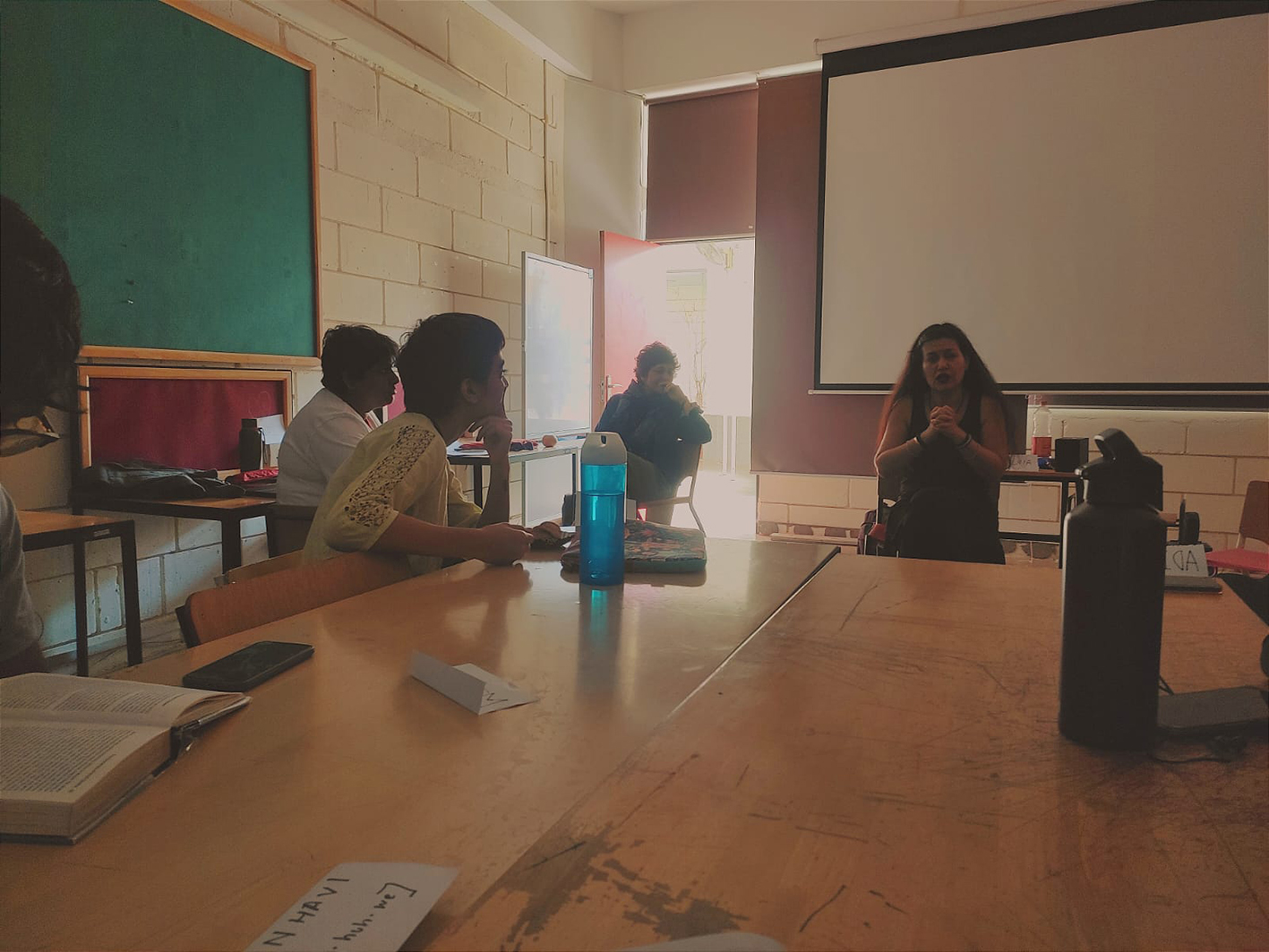
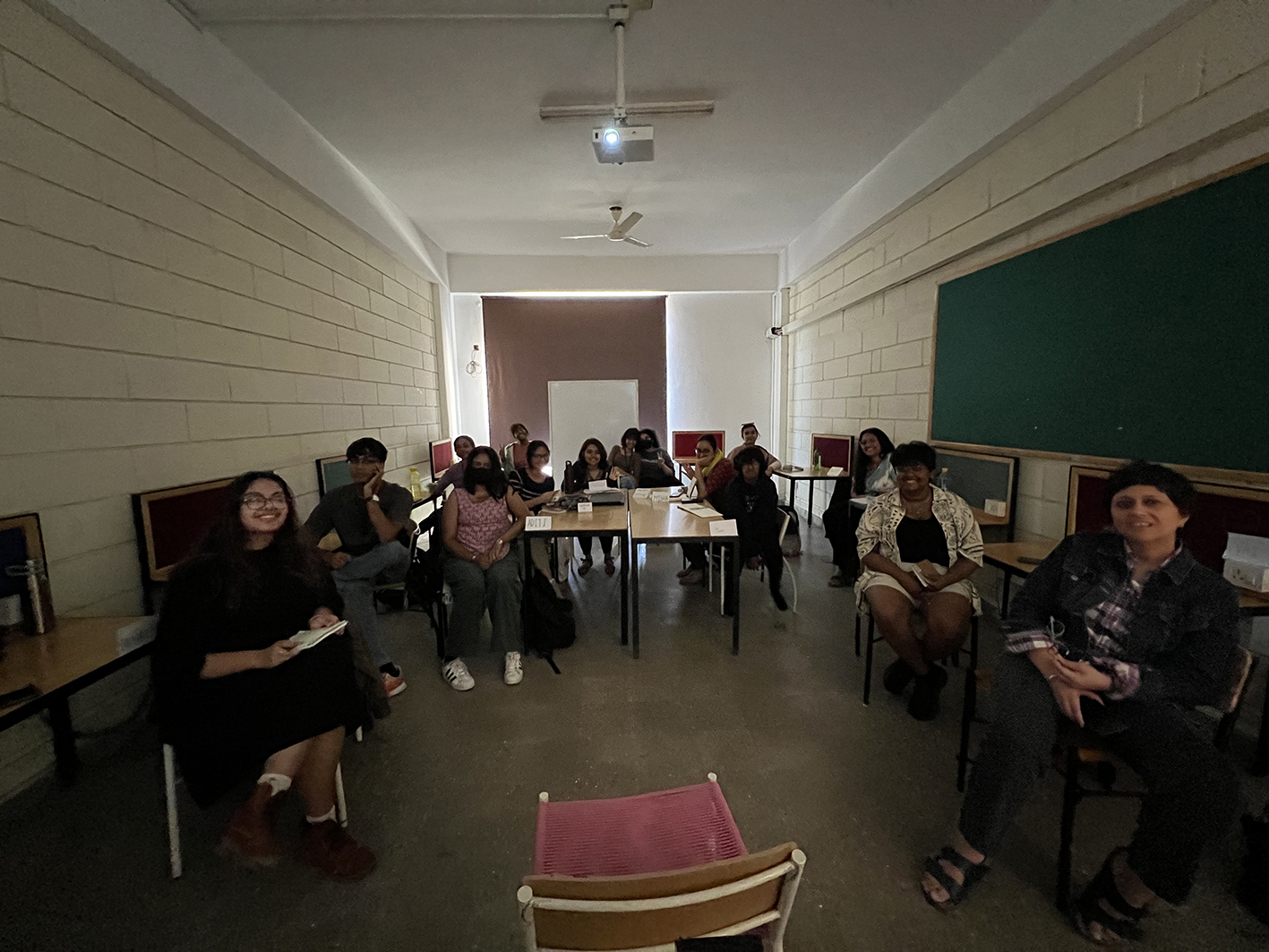 the day Ayisha Abraham visited our class
the day Ayisha Abraham visited our class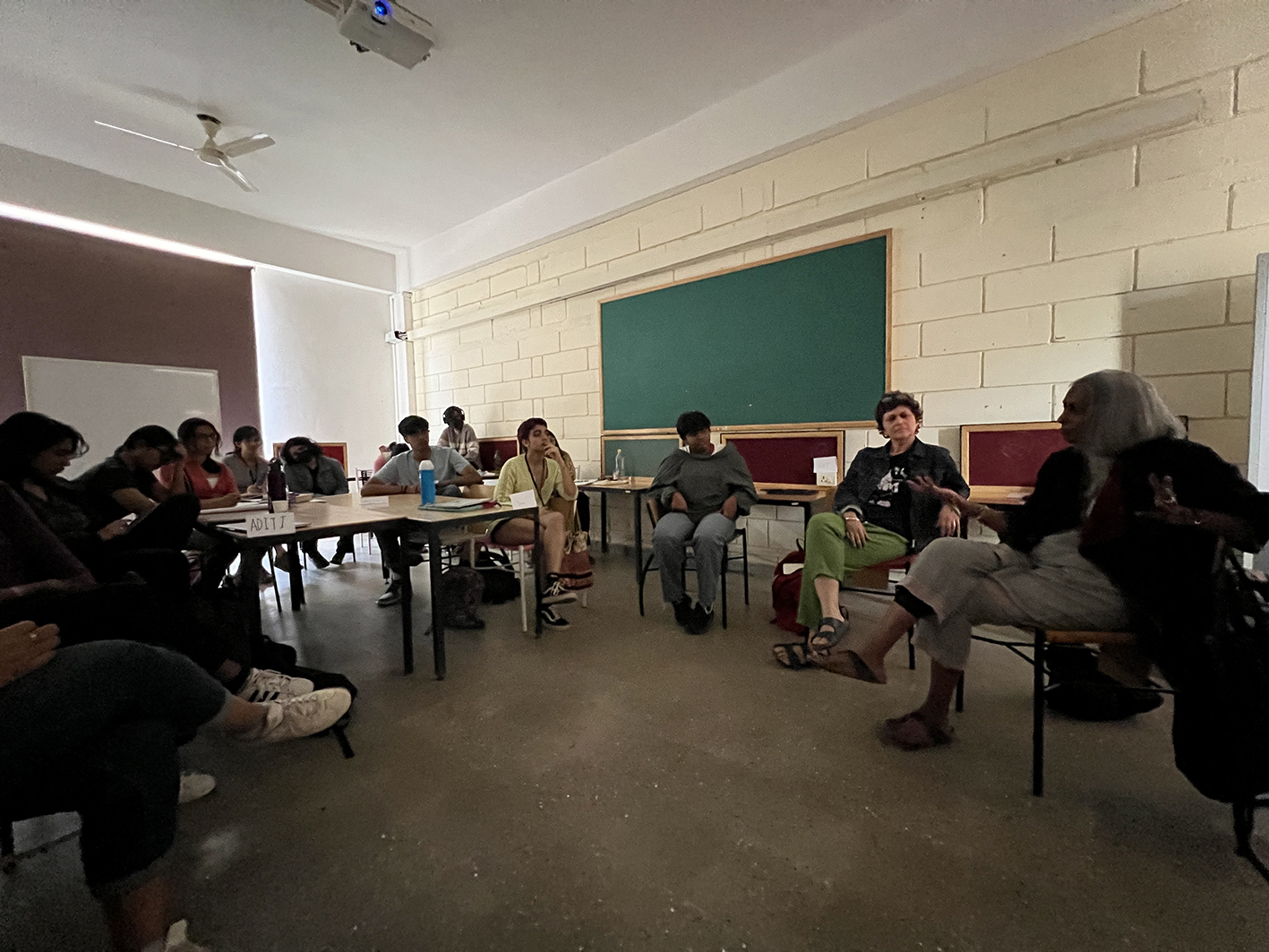 the day Ayisha Abraham visited our class
the day Ayisha Abraham visited our class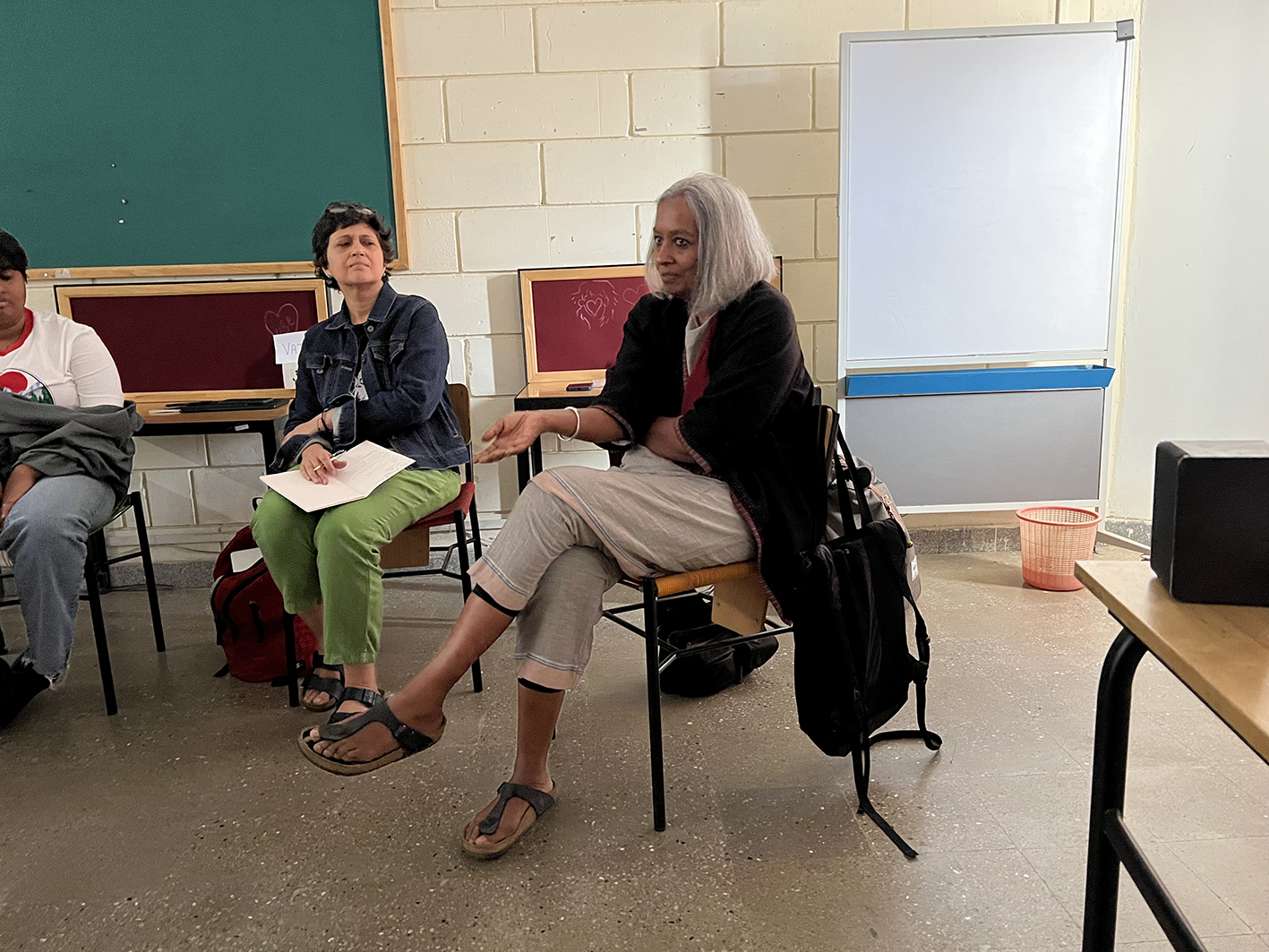
 Part of the class took place at Experimenta Festival, held at the Goethe Institute Bangalore.
Part of the class took place at Experimenta Festival, held at the Goethe Institute Bangalore.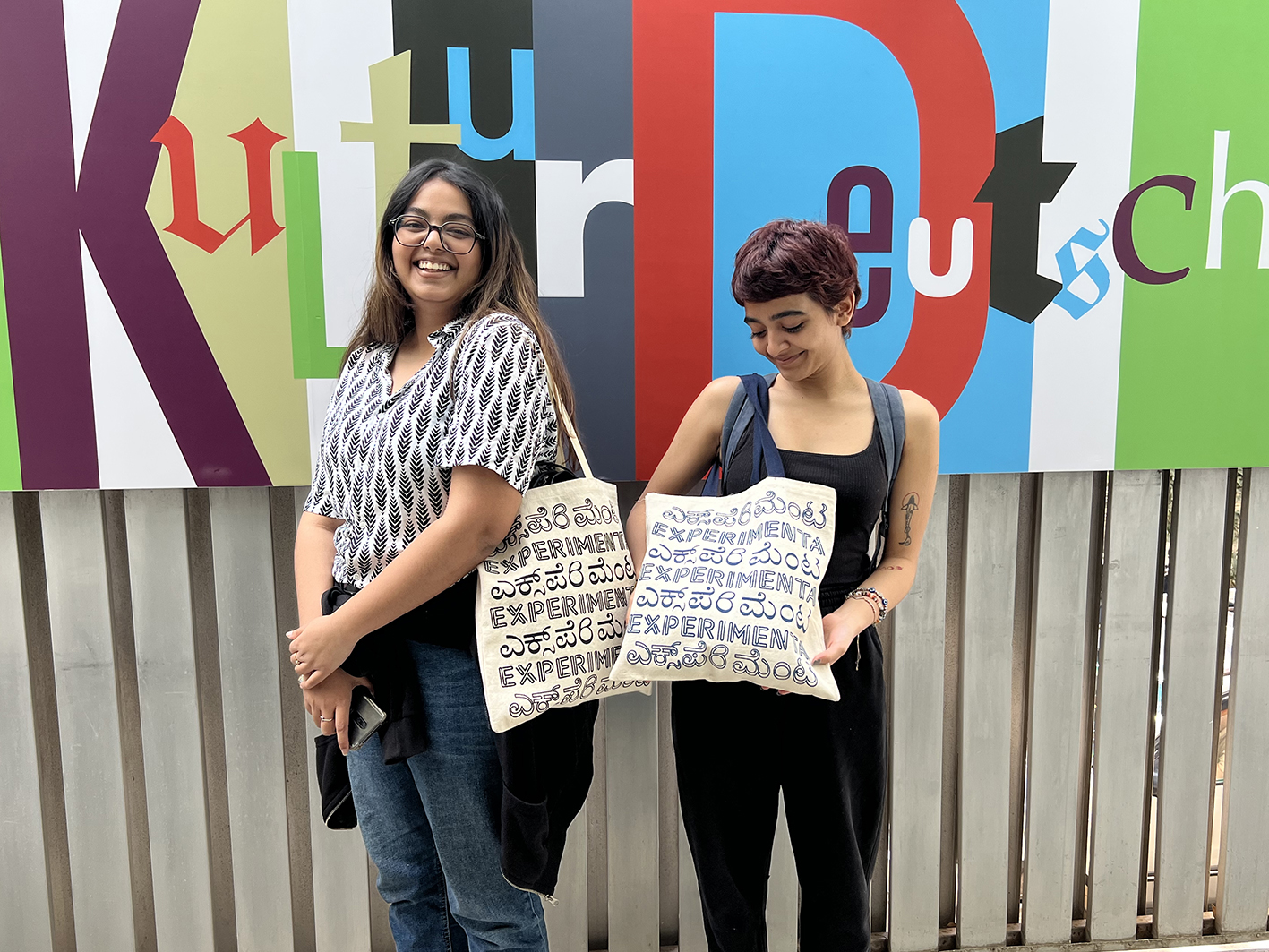 the day Sohrab Hura visited our class
the day Sohrab Hura visited our class the day Sohrab Hura visited our class
the day Sohrab Hura visited our class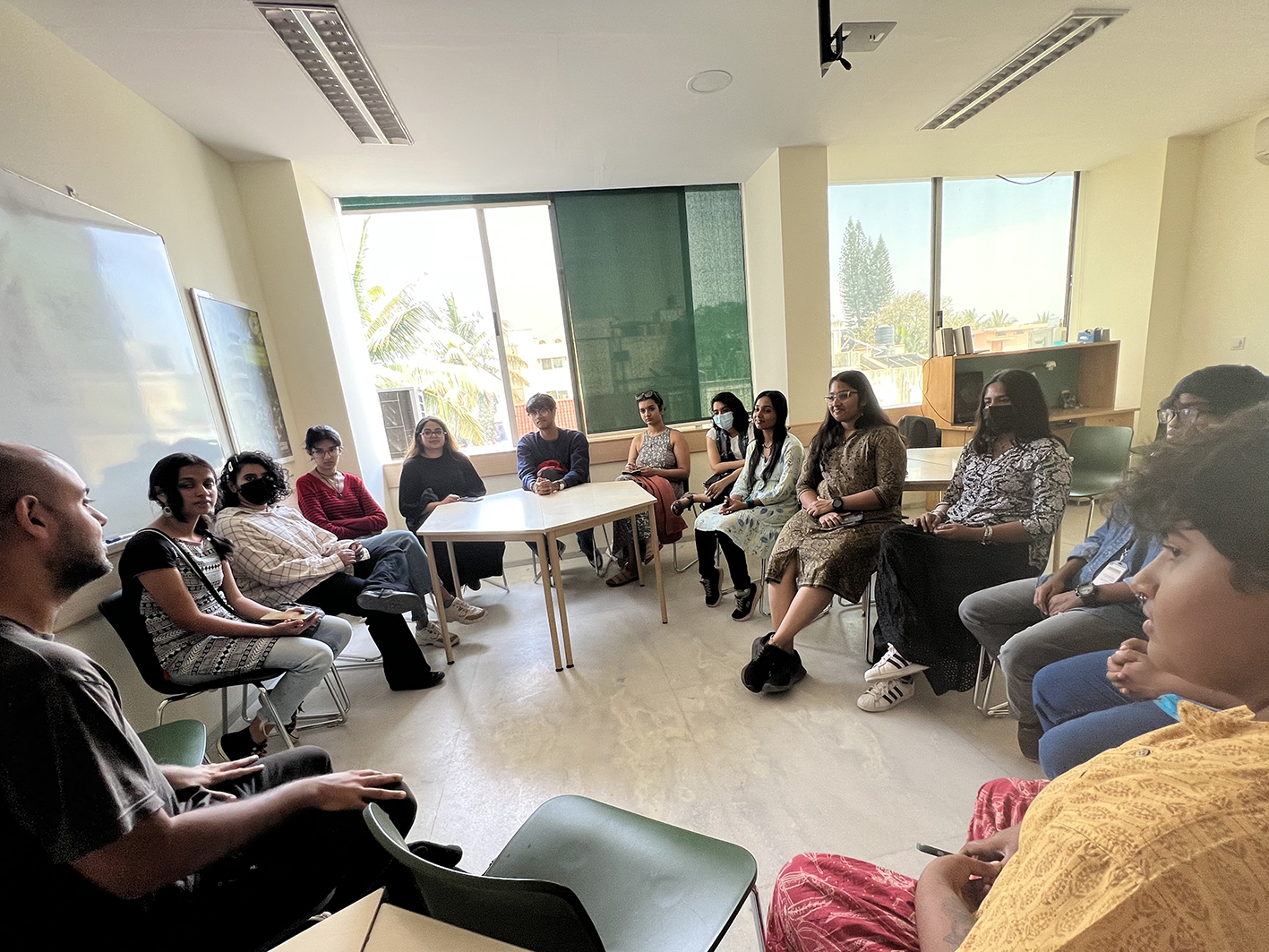 the day Sohrab Hura visited our class
the day Sohrab Hura visited our class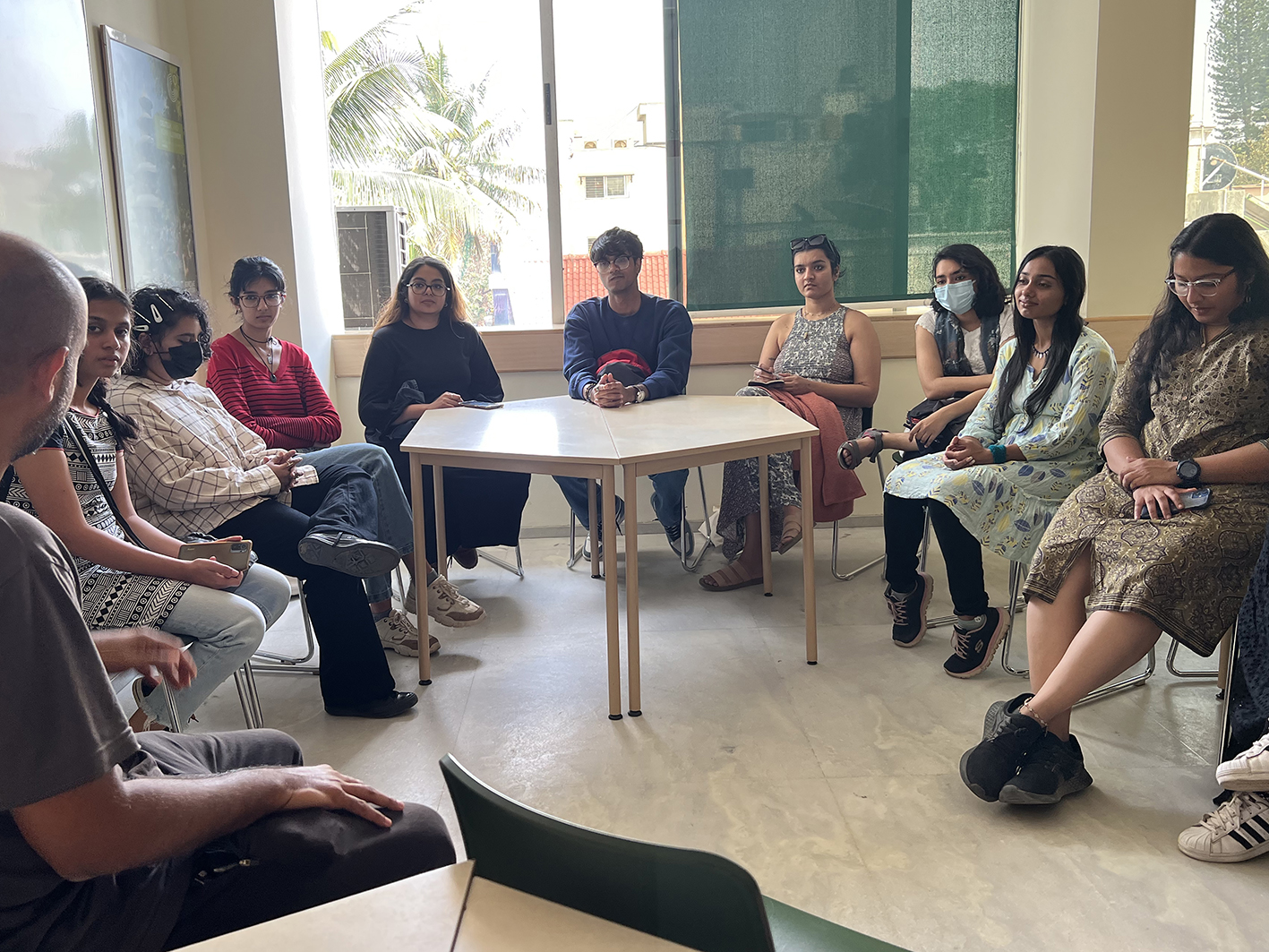 the day Payal Kapadia and Ranabir Das visited our class
the day Payal Kapadia and Ranabir Das visited our class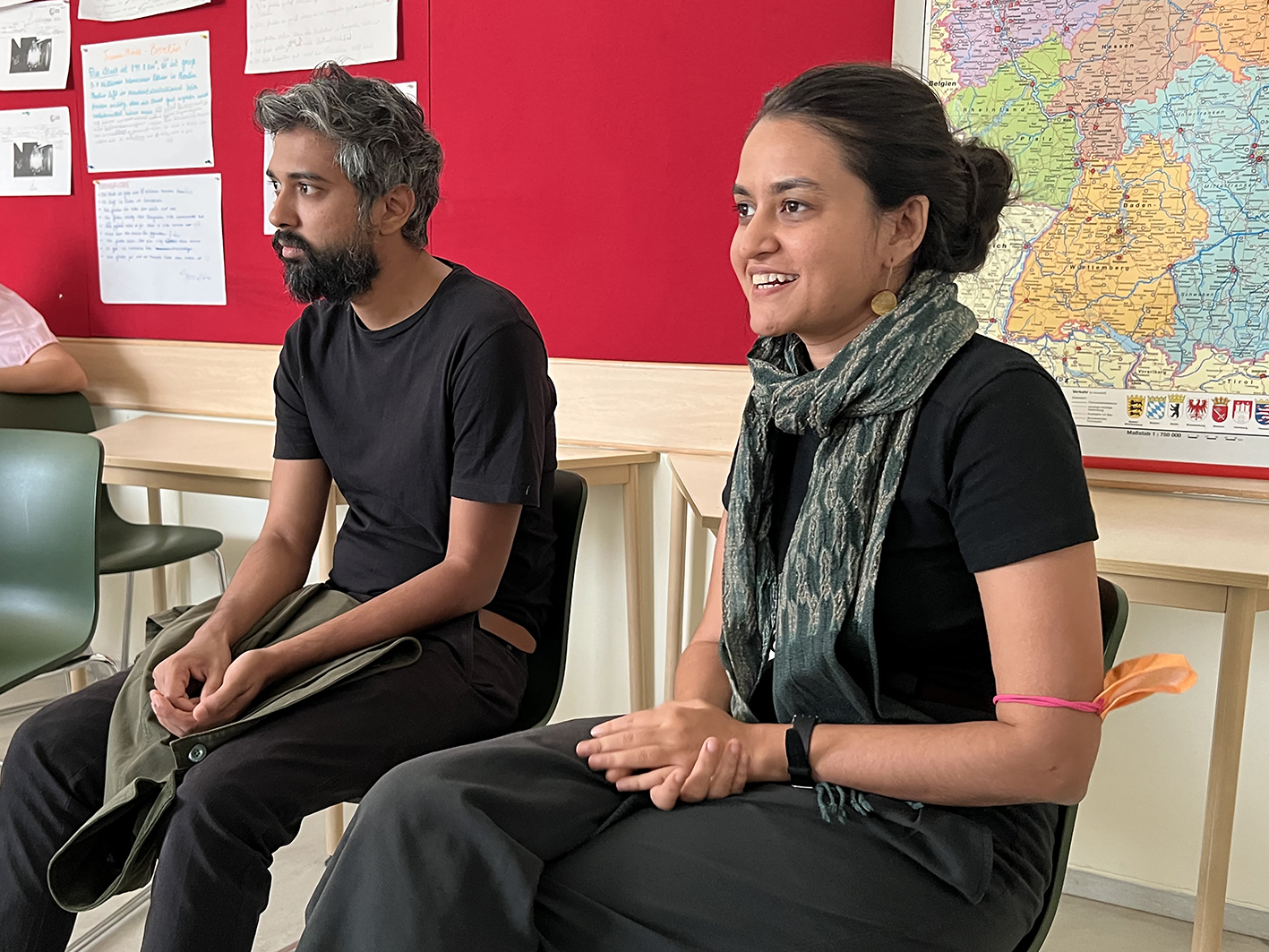 group photo with Payal and Ranabir
group photo with Payal and Ranabir presentation of the students' work
presentation of the students' work
